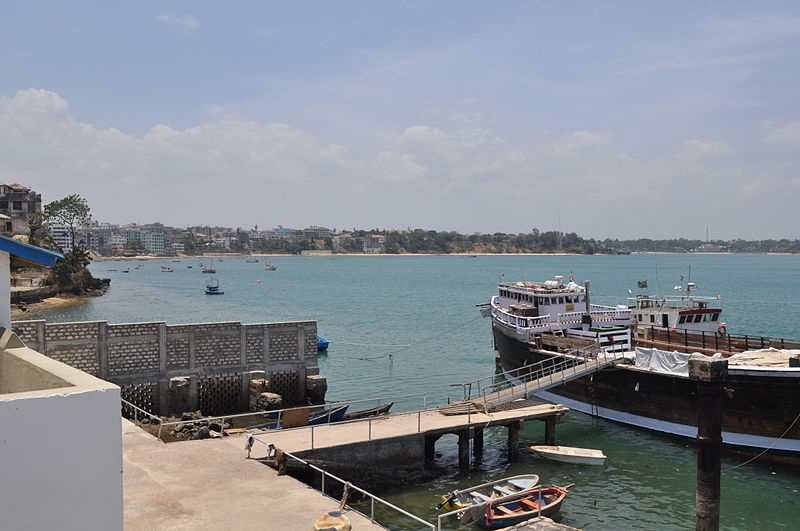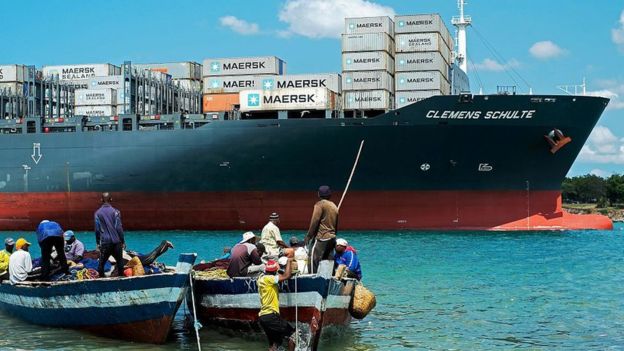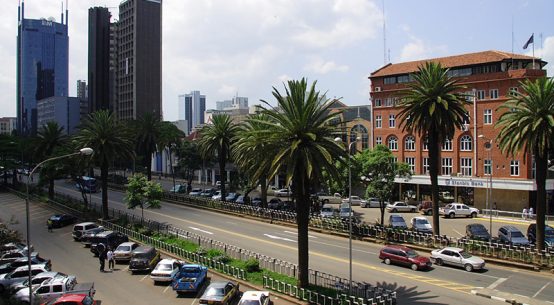
The new ports in Lamu, Kenya and Bagamoyo, Tanzania will join the ports at Mombosa, Kenya and Tanzania’s Dar es Salaam as sub-Saharan Africa’s most important shipping centers.
With the creation of transportation routes across land-locked countries in East Africa, the ports will improve commerce throughout a region that has struggled to transport goods to global markets. But Kenya and Tanzania have to finalize the funding of the projects before the ports can be completed.
The China Communications Construction Company will build the Lamu Port off Manda Bay in three phases. The first phase, which began last year, involves the development of three berths at an estimated cost of $478.9 million, according to All Africa. The port is expected to feature 32 ship berths upon completion in 2030.
The Lamu Port is part of a greater project—known as the Lamu Port and Southern Sudan-Ethiopia Transport Corridor—that will create an additional trade route between Kenya, Ethiopia, South Sudan and Uganda. The corridor will also include a railroad line, oil pipeline, highways and other facilities. Once completed, the corridor is expected to reduce congestion at Kenya’s other port at Mombasa.

In Tanzania, officials have yet to announce how many phases the Bagamoyo project—which is being funded by China Holdings International and Oman’s State General Reserve Fund—will involve. However, the port is expected to receive megaships and may also feature a railroad line that connects to Rwanda or Burundi.
Building both ports will help increase trade in East Africa, Although long-distance railroads connect the ports at Mombosa and Dar es Salaam to much of sub-Saharan Africa, infrastructure, and high transportation costs have made it difficult for land-locked countries in the region to access global markets. Conflict and the threat of attacks by militants and terrorist groups, such as al-Shabaab, also threaten cargo shipments.
Once products do reach port, bottlenecks and the high costs of loading and unloading ships result in delays. According to the World Bank, inefficiencies at Dar es Salaam can cost Tanzania and neighboring countries up to $2.6 billion per year.
The ports at Lamu and Bagamoyo will help improve the efficiency of shipping. Both centers are expected to handle approximately 20 million containers per year—many of which will go to and from land-locked countries, including Rwanda, South Sudan, Uganda, and Burundi. Kenya’s new corridor will play a particularly significant role in the export of oil, gas and other raw materials.
Tanzania’s government also recently convinced Uganda to build an oil pipeline through the Tanzanian port of Tango. Tanzania plans to ultimately construct a railway line from either Burundi or Rwanda to Bagamoyo or Dar es Salaam, according to the BBC. But Kenya and Tanzania will have to overcome financial hurdles before they can complete both port projects.
The construction of the Lamu port has recently slowed as a result of a lack of funding from Kenya’s Treasury. Likewise, Tanzania will begin constructing the Bagamoyo port once it concludes negotiations with China Holdings International and Oman on the financing of the $10 billion project.
FOLLOW US ON FACEBOOK FOR MORE LOGISTICS NEWS
The Tanzanian government also will have to compensate 2,000 residents of Bagamoyo who have lost their property and farmland to the project. There have been conflicting reports about whether Tanzania suspended the construction of Bagamoyo to instead improve the performance and capacity of Dar es Salaam.
According to All Africa and IHS Fairplay, Tanzania’s ministry of Works, Transport and Communication has refuted claims about the project’s suspension and expects construction to begin.








